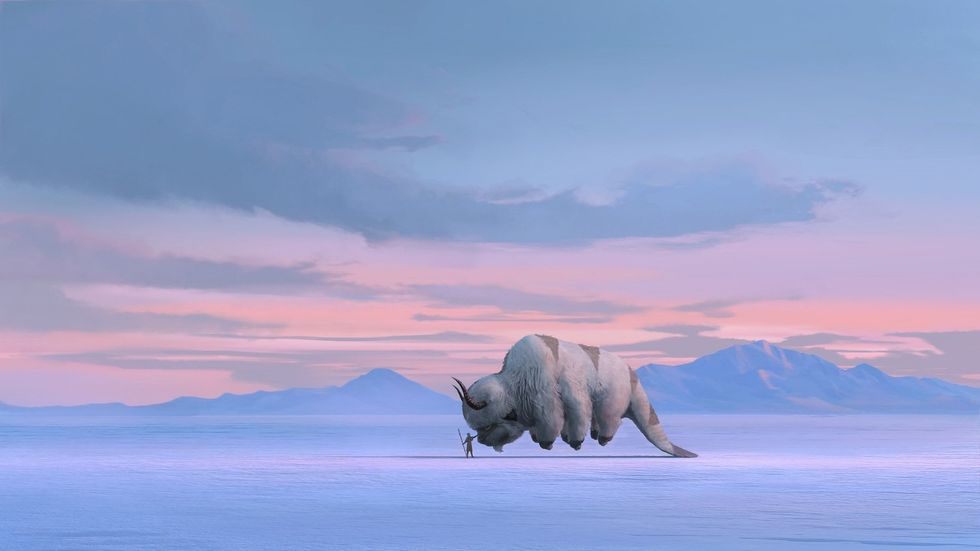Throughout my 21 years of living, I've never watched the early 2000s Nickelodeon show "Avatar: The Last Airbender"created by Michael DiMartino and Bryan Konietzko. It wasn't until the beloved series was added to Netflix in May 2020 where I got to experience it for the first time. I love animated shows, but I was concerned that my roommates were hyping it up a little too much.
However, I was wrong. "Avatar: The Last Airbender"is a beautiful masterpiece with perfect use of long-form storytelling shown throughout three seasons. This show can be enjoyed by people of all ages; it has great humor, unforgettable action scenes with high stakes, lovable characters and surprisingly deep themes.
If you haven't seen the show already, I absolutely recommend it for your next binge on Netflix.
After I finished "Avatar: The Last Airbender," I knew I was ready to watch the 2010 live-action remake by M. Night Shyamalan. Even though I've never watched the TV show up until recently, everyone knows about the infamous critical and commercial failure that heavily tainted Shyamalan's filmmaking career. What was once supposed to be the first of a trilogy, "The Last Airbender" will forever be known as a triumphant failure in film adaptation history.
Shyamalan's first mistake was to condense the entire first season of "Avatar: The Last Airbender," into a 103-minute full-length movie. The plot is extremely hard to follow for anyone that has never watched the original TV show. In a quick scene, Sokka and Katara's grandmother poorly explains "The Avatar State" and "The Spirit World," both important key elements of the Avatar story.
The film quickly skimmed through major events and important dialogue. It rushed to include as many moments from Book One as possible. Every aspect of the show's story we all know and love, from Aang's fear of the weight of being the Avatar and Zuko's internal conflict of needing to impress his father and return as Prince to The Fire Nation, the live-action film adaptation failed its audiences with no emotional investment of the story or characters whatsoever.
In the show, The Four Nations were based on different Asian cultures. The Water Nation was based on Arctic Inuit Tribes, the Earth Nation was centered on the federal monarchy of China, the Fire Nation drew themes from Imperial Japan and Tibetan Buddhist monks inspired the Air Nation.
However, Shyamalan failed at correctly representing these cultures with his casting. Every leading character's race was changed. Aang, Katara and Sokka's actors were white, as well as almost everyone in the Southern and Northern water tribe. The Fire Nation cast was swapped for all Middle Eastern and Indian actors.
"The Last Airbender"is a prime example of Hollywood's racial miscasting.
The poor direction and script by M. Night Shyamalan made every character feel awkward and unbelievable. Each character felt lifeless, only present to say lines and move from scene to scene. There was no comedic timing for any of the "jokes" within the script, as well as the mispronunciation of the main character's names. Zuko's nonexistent face burn, the film forgetting about Aang and Katara's unfolding love story and so on.
These errors are huge distractions that make the film unwatchable.
In "Avatar: The Last Airbender,"the powers of the four nations are based on four different styles of Chinese Martial Arts. Avatar Martial Arts Expert Sifu Kisu was the person to create the bending for the show. The Waterbenders used the style of Tai Chi, Earthbending is based on the style of Hung Gar, Northern Shaolin Kung-Fu inspired Firebending and lastly, Airbending uses a style called Ba Gua. The animators were then successfully able to translate these martial art styles into the motions of bending within the show.
Even with an enormous budget of 150 million dollars, the live-action adaptation failed to correctly showcase the four bending elements. With the magical concept of the human manipulation of Water, Earth, Fire and Air, you'd think "The Last Airbender"would at least care to make the special effects of the elements feel as amazing as it does on the animated show.
Most of the fighting scenes in the film feel like an elaborate dance where the characters go through an entire set of movements before their element bending even starts. There is a scene where six Earthbenders perform a poorly choreographed dance, which summons a single rock that crashes into a Firebender. It's shocking how no one on "The Last Airbender"noticed these technical mistakes.
"The Last Airbender"remains one of Hollywood's most disastrous film adaptations ever made. 10 years after Shyamalan's film, Netflix reported that they will be creating their own live action series of "Avatar"with both of the animated TV shows' creators involved in the development.
Hopefully, this new chance of a live-action reboot can finally give one of the best-animated shows, "Avatar: The Last Airbender"what it deserves.















